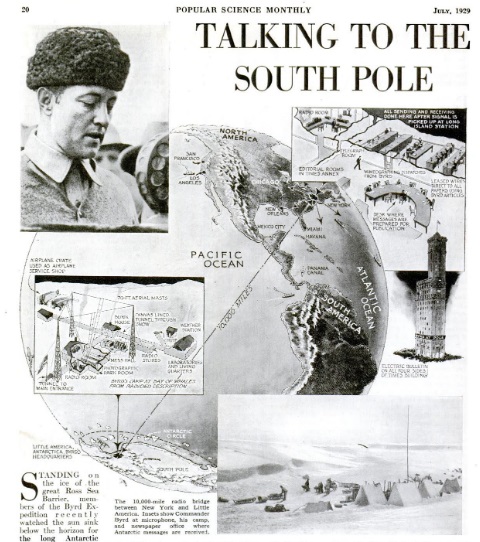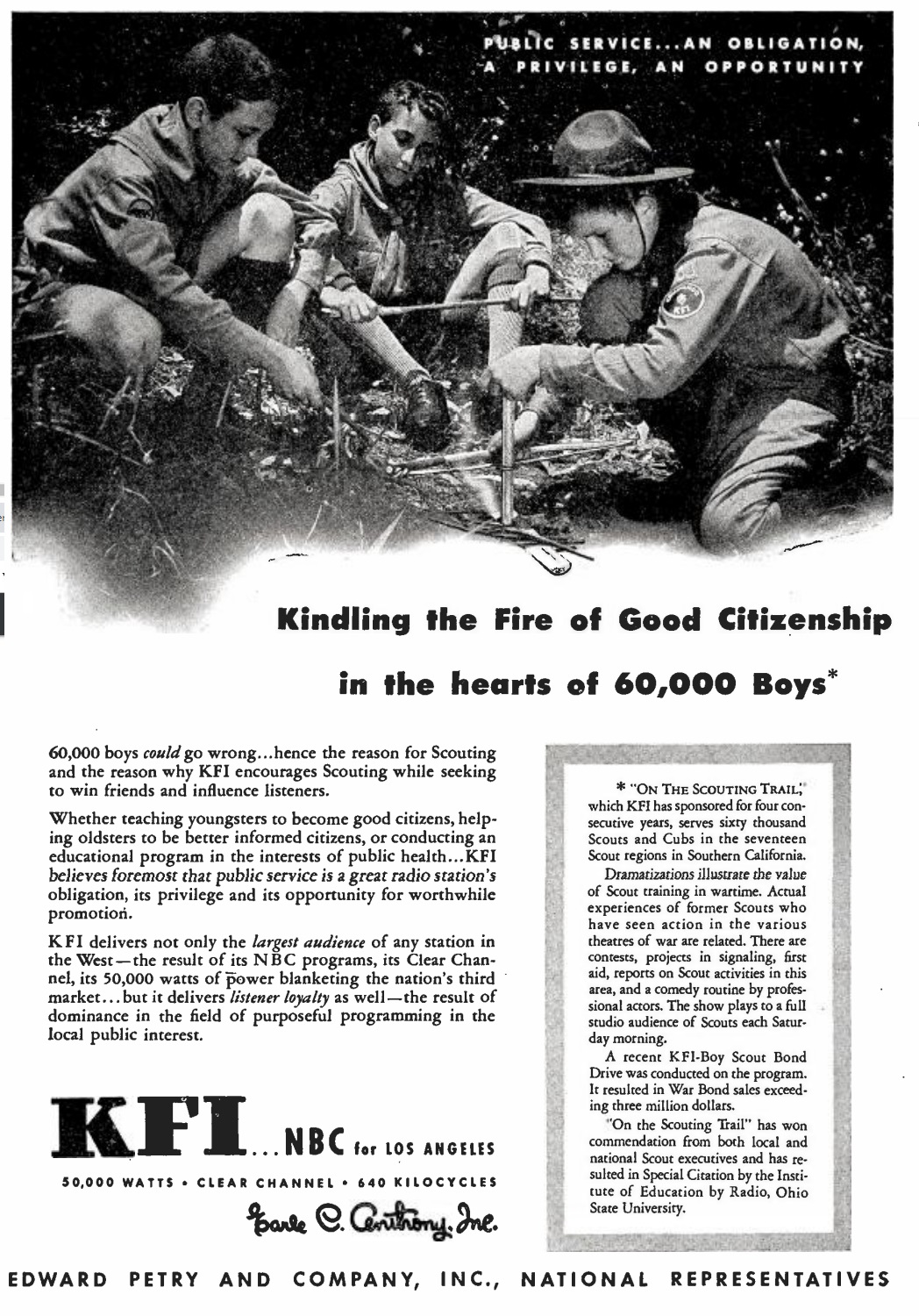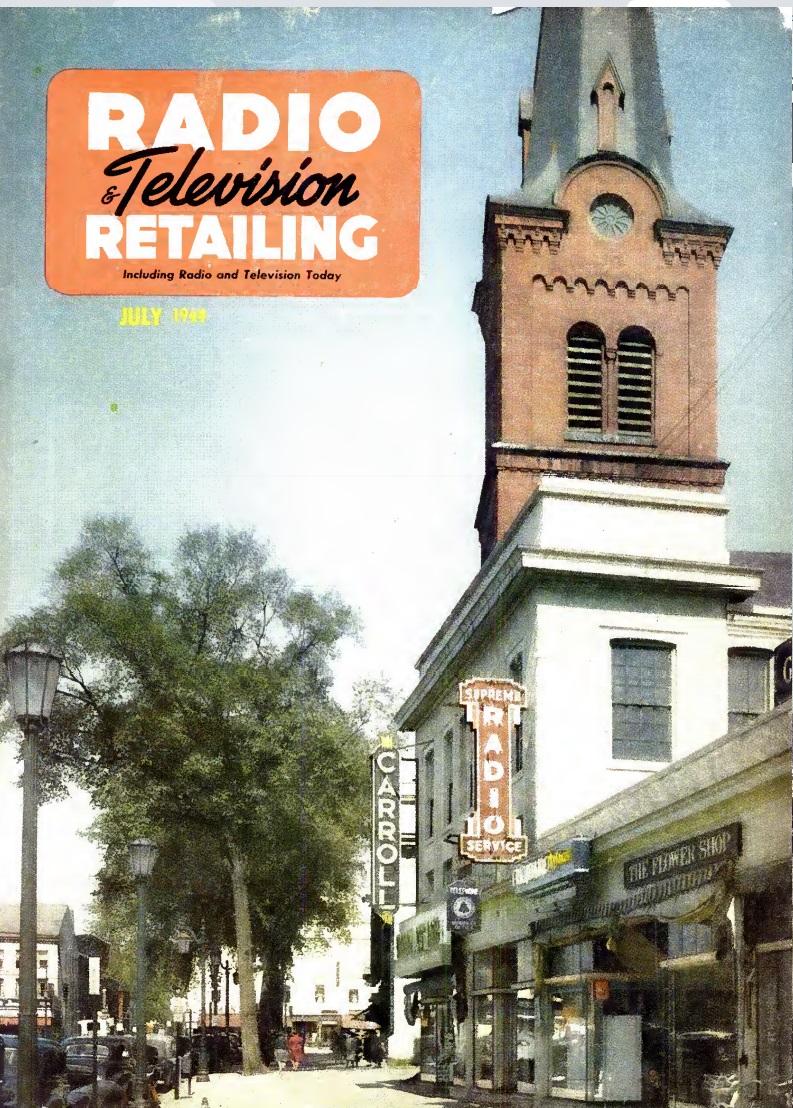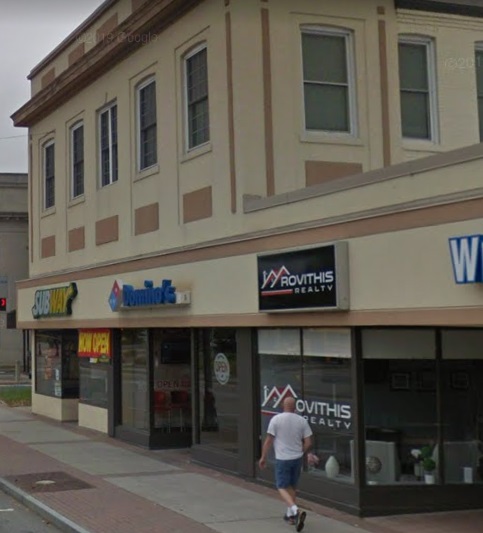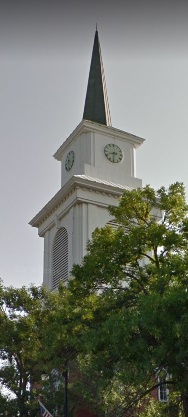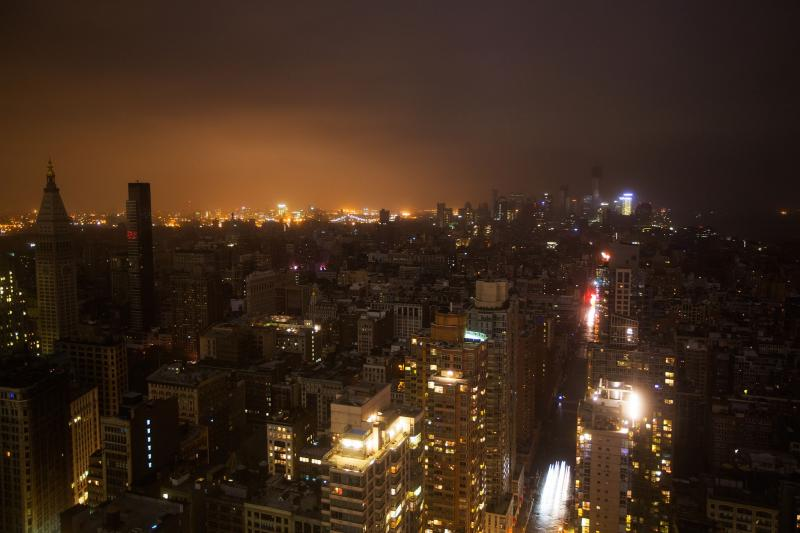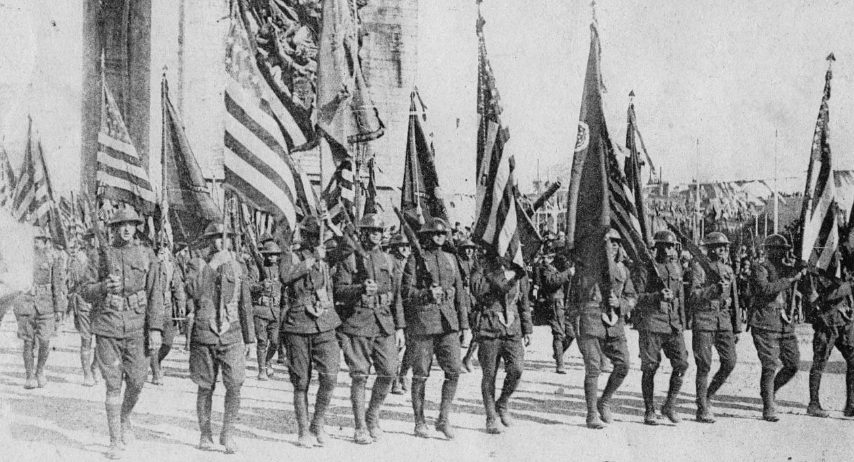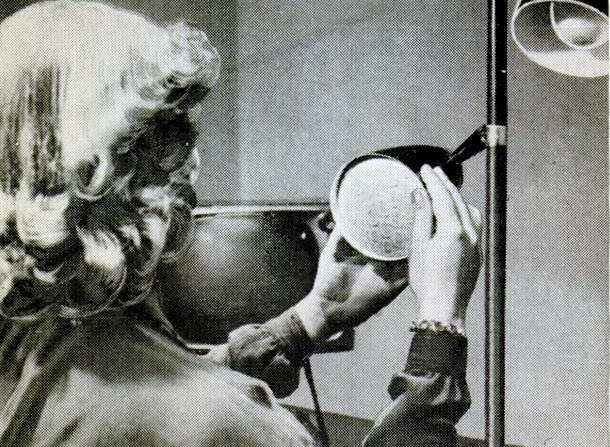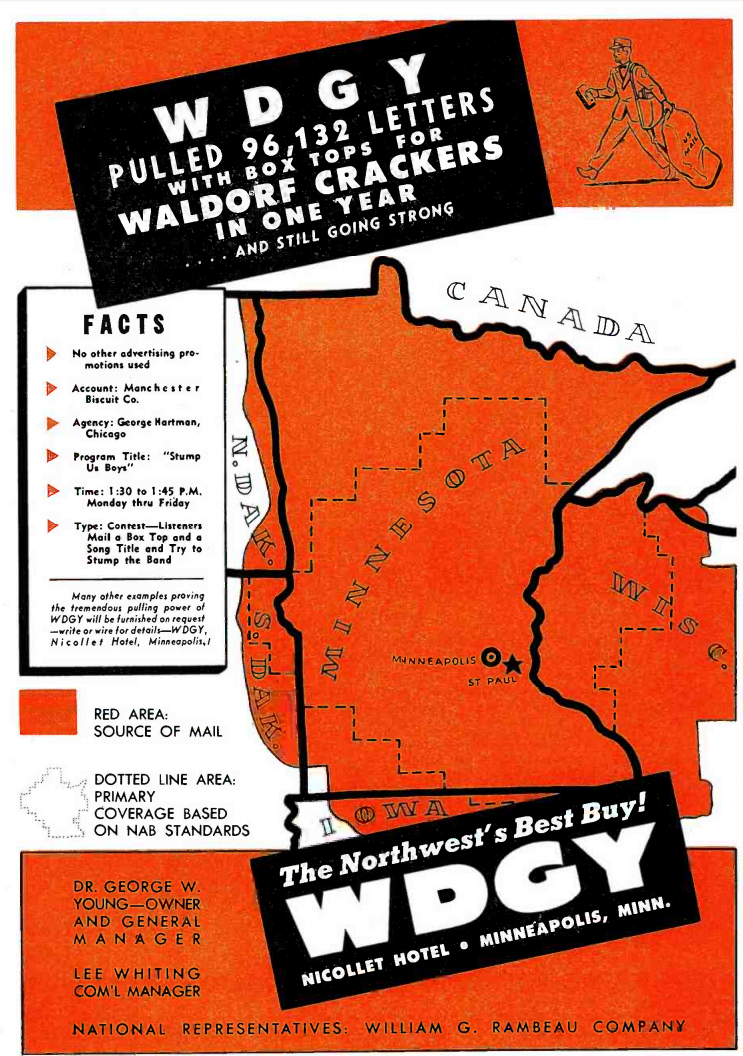The recent blackout in New York serves as a reminder that you should be prepared and have some useful items on hand. The suggestions on this page are a bare minimum, and you probably want to be more prepared. But this page can serve as a checklist to make sure you have at least the very basics on hand.

 We call it a “blackout” because the lights go out, and the natural first idea is that you’ll need light. Chances are, your cell phone will work as a flashlight, but the battery won’t last forever, and it’s probably not the most convenient. Fortunately, flashlights are very inexpensive, and you ought to keep one or more in various locations in your home and vehicle. The Eveready flashlights shown at left are very inexpensive, but they are fairly durable and have long battery life. (Even though they look like your grandfather’s flashlight, they actually contain quite good LEDs and use only one D cell rather than two.) They come with batteries, but it doesn’t hurt to get some spares.
We call it a “blackout” because the lights go out, and the natural first idea is that you’ll need light. Chances are, your cell phone will work as a flashlight, but the battery won’t last forever, and it’s probably not the most convenient. Fortunately, flashlights are very inexpensive, and you ought to keep one or more in various locations in your home and vehicle. The Eveready flashlights shown at left are very inexpensive, but they are fairly durable and have long battery life. (Even though they look like your grandfather’s flashlight, they actually contain quite good LEDs and use only one D cell rather than two.) They come with batteries, but it doesn’t hurt to get some spares.

 Your next need is information. In many (but not all) blackouts, the cellular network will keep functioning, at least for a few hours, so being able to power your phone is important. Obviously, you won’t be able to plug it in to the wall, so at a minimum, you’ll want to have a charger that plugs into your car, such as the one shown at left. Obviously, you’ll want to make sure that the plug fits your phone. This one uses a micro USB plug, which almost all non-Apple phones now use. If you already have some USB cables, the 12 volt USB plugs are very inexpensive.
Your next need is information. In many (but not all) blackouts, the cellular network will keep functioning, at least for a few hours, so being able to power your phone is important. Obviously, you won’t be able to plug it in to the wall, so at a minimum, you’ll want to have a charger that plugs into your car, such as the one shown at left. Obviously, you’ll want to make sure that the plug fits your phone. This one uses a micro USB plug, which almost all non-Apple phones now use. If you already have some USB cables, the 12 volt USB plugs are very inexpensive.

 If you want to charge away from your car, one very inexpensive method is the USB charger shown at the right. This charger contains a USB outlet (so you’ll still need the USB-Micro USB cord) and is powered by four AA alkaline batteries. Therefore, you can charge your phone at any time, as long as you have AA alkaline batteries. The extremely low cost of this type of charger makes it ideal to keep a few on hand in case of emergency. Even if the power is out, you might still be able to buy batteries. But more importantly, it allows you to keep batteries on hand to keep your phone charged.
If you want to charge away from your car, one very inexpensive method is the USB charger shown at the right. This charger contains a USB outlet (so you’ll still need the USB-Micro USB cord) and is powered by four AA alkaline batteries. Therefore, you can charge your phone at any time, as long as you have AA alkaline batteries. The extremely low cost of this type of charger makes it ideal to keep a few on hand in case of emergency. Even if the power is out, you might still be able to buy batteries. But more importantly, it allows you to keep batteries on hand to keep your phone charged.

There are a few downsides of this type of charger. The main one is that it goes through the AA batteries quite fast, so it’s not a good long-term solution. Also, it does not “use up” the batteries completely. In other words, even after you are unable to charge your phone with that battery, the battery is still good for other things, such as a flashlight or radio. Therefore, if you have some of these chargers on hand, I would recommend also getting some inexpensive AA flashlights.

 And speaking of radios, you should have at least one battery operated radio. You can get information on your cell phone, but streaming is generally battery intensive. Also, in many emergencies, the cellular network will become unavailable or extremely slow. During the New York blackout, WCBS radio was providing excellent information about current conditions, and anyone with an inexpensive radio would have been able to tune in. The inexpensive radio shown at the left would give you this information immediately. As an added bonus, it runs on AA batteries. So when you have depleted a battery charging your phone, you can still use that “dead” battery to listen to the radio.
And speaking of radios, you should have at least one battery operated radio. You can get information on your cell phone, but streaming is generally battery intensive. Also, in many emergencies, the cellular network will become unavailable or extremely slow. During the New York blackout, WCBS radio was providing excellent information about current conditions, and anyone with an inexpensive radio would have been able to tune in. The inexpensive radio shown at the left would give you this information immediately. As an added bonus, it runs on AA batteries. So when you have depleted a battery charging your phone, you can still use that “dead” battery to listen to the radio.

 One product you may want to consider for all of these needs is the Midland emergency radio shown at the left. I own one of these, and it can come in quite handy. It is a combination radio/flashlight/cell phone charger. The flashlight is excellent, and the radio is quite good. In addition to normal AM FM broadcasts, it picks up NOAA weather stations, and even includes an alert feature that will sound an alarm in the event of severe weather alerts. It has both a USB and micro USB plug to charge a phone. One micro USB cord is included. It has a built-in battery which can be charged in three ways. First of all, before an emergency, you can charge it up by plugging it into a standard USB charger, or even by plugging it into your computer. It’s a good idea to keep the battery topped off in this way. But when power is unavailable, you can charge it with the built-in solar panel, or with the built-in hand crank. Thus, this one device will provide you with a flashlight and radio, and will also keep your phone charged.
One product you may want to consider for all of these needs is the Midland emergency radio shown at the left. I own one of these, and it can come in quite handy. It is a combination radio/flashlight/cell phone charger. The flashlight is excellent, and the radio is quite good. In addition to normal AM FM broadcasts, it picks up NOAA weather stations, and even includes an alert feature that will sound an alarm in the event of severe weather alerts. It has both a USB and micro USB plug to charge a phone. One micro USB cord is included. It has a built-in battery which can be charged in three ways. First of all, before an emergency, you can charge it up by plugging it into a standard USB charger, or even by plugging it into your computer. It’s a good idea to keep the battery topped off in this way. But when power is unavailable, you can charge it with the built-in solar panel, or with the built-in hand crank. Thus, this one device will provide you with a flashlight and radio, and will also keep your phone charged.
Obviously, these suggestions are just the starting point for preparedness. But just having a source of light and information in an emergency will go a long ways in making an emergency more bearable. And the cost of these minimal preparations is extremely low. After you have made these basic preparations, some of my other pages will provide you with ideas of other preparations you can make for emergencies:
Some links on this page are affiliate links, meaning that this site receives a small commission if you buy after using the link. The links above are for ordering on Amazon.
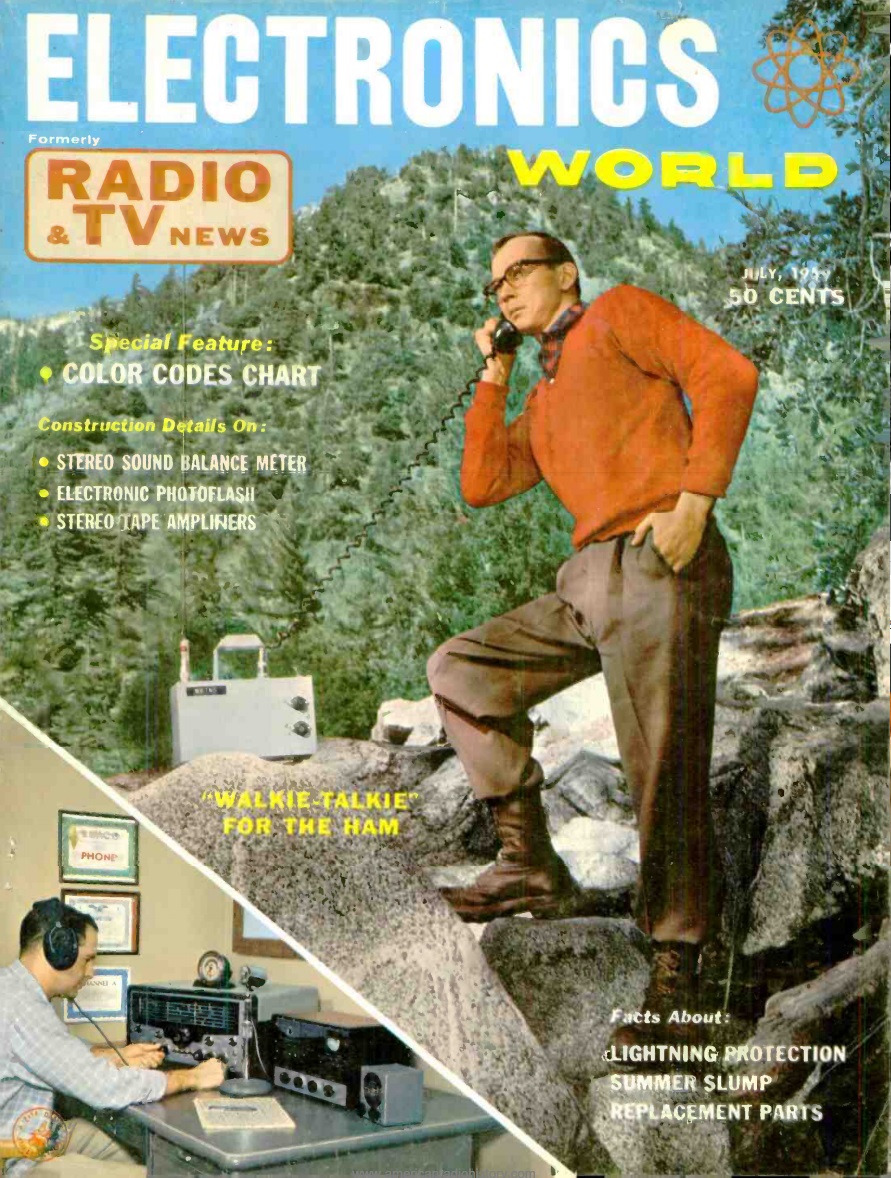 The dapper outdoorsman ham shown on the cover of Electronics World for July 1959 is none other than Don Stoner, W6TNS.
The dapper outdoorsman ham shown on the cover of Electronics World for July 1959 is none other than Don Stoner, W6TNS.

